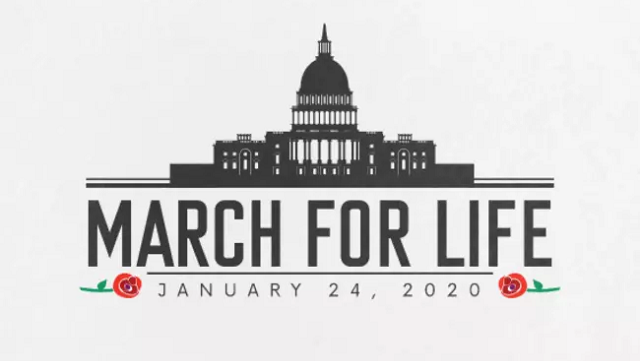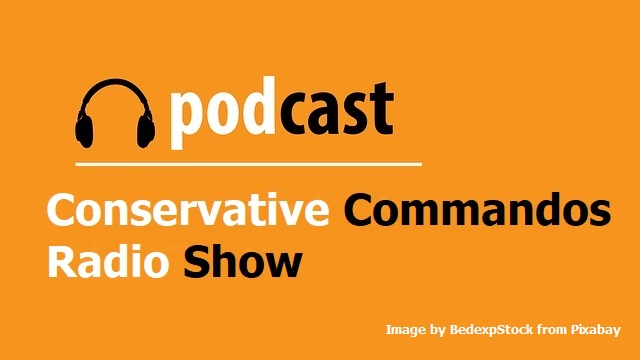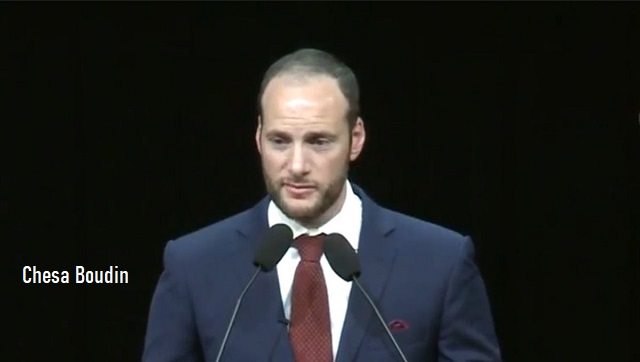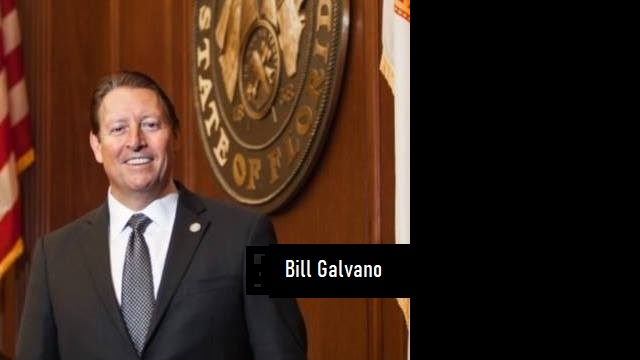
“Life Empowers: Pro-life Is Pro-Woman” is the theme of this year’s March for Life, set to take place Friday in the nation’s capital. Since 1974, the March for Life has gathered to remember the lives lost since the Supreme Court’s Roe v. Wade ruling legalizing abortion, and to remind America that each life has value.
Jeanne Mancini, president of the March for Life, joins The Daily Signal Podcast to discuss what to expect at this year’s march and where the pro-life movement as a whole is headed in 2020. Listen to the podcast or read the lightly edited transcript below.
Virginia Allen: I am joined by the president of March for Life, Jeanne Mancini. Jeanne, thank you so much for being with me today.
Jeanne Mancini: Thanks so much for having me, Virginia.
In these trying times, we must turn to the greatest document in the history of the world to promise freedom and opportunity to its citizens for guidance. Find out more now >>
Allen: Now, March for Life began in January of 1974, one year after the passage of Roe v. Wade. March for Life really started out just as a small, peaceful demonstration, but it quickly grew into the world’s largest pro-life event. The 2020 march is taking place on Jan. 24 in Washington, D.C. Can you share with us what the theme is that you all chose for this year’s march?
Mancini: I’d love to and if it’s OK, I’ll just give a little bit of backdrop that every year we do a lot of thinking and discerning about the appropriate theme because with the March for Life being the only place where all of the different pro-life groups come together annually, it’s an awesome springboard to message, essentially, about what we think are the most cutting edge, most pressing issues in building a culture of life.
Themes in past years have included adoption and nubile decision. Another year, in fact, last year, we had pro-life as pro-science and really delved into the science behind embryology and some of the wonderful neonatal surgeries available, etc.
This year our theme is “Life Empowers: Pro-Life Is Pro-Woman.” And, of course, this is the year where we celebrate the centennial anniversary of the 19th Amendment, which created a woman’s right to vote.
So it’s a great opportunity to go back and look at the suffragist, the early feminist, the early female leaders who recognize the inherent dignity of women and the inherent dignity of the unborn. We’re not at odds with each other and they had a really good understanding about that.
We’re having a lot of fun with this theme and we’re excited to be able to talk about that more next week.
Allen: Absolutely. Now, who is speaking at this year’s march?
Mancini: We’ve got a great, great, great lineup and stay tuned because there are more announcements to be made even tomorrow.
Legislatively, we will welcome to the stage Representative Chris Smith, as well as state Representative, state Senator, as of yesterday, Katrina Jackson.
Chris Smith is very well-known. He’s from New Jersey and just a stalwart on our issues.
Katrina Jackson as well is very interesting because she’s one of the few pro-life Democrats and, in particular, we’re so interested to have her this year because she was the author of the bill in Louisiana related to abortion clinic regulations that then became a law. And now will go before the Supreme Court in March. And so it’ll be very interesting to hear from Senator Jackson.
So those are some of our legislative speakers and there’s a few more to be there.
We have Claire Culwell and Melissa Ohden. They both have these incredibly inspiring stories. They both survived abortion, essentially. And their lives are such witnesses and so they’re going to share their stories. And, of course, we’ll link that very much to the born-alive discharge petition in the House.
Right now we’ve got Jim Daly from Focus on the Family, Marjorie Dannenfelser, head of Susan B. Anthony List—a good year for Marjorie to speak with the theme. Another wonderful woman, she’s a pro-life leader in New Mexico, Lisa Martinez.
We also have a local pastor, David Platt from McLean Bible Church, a very well-known church here in the D.C. area. He will be doing our closing prayer.
And, like I said, we’ve got a few more announcements. And I should say our favorite speaker, at least when we do our surveys after the March for Life, is almost always the young person that speaks because, of course, by and large the participants in the March for Life are young people.
Our one specific designated young person who’s speaking this year is Catalina Scheider Galiñanes. And she is from Oakcrest, a school in Vienna, Virginia. She’s going to speak about why she’s pro-life.
Allen: Wow. So many amazing speakers. I really look forward myself to hearing many of them at the event on the 24th.
People come to March for Life in Washington, D.C., from states all across America. What is that message or motivation that you are really hoping that marchers will take with them back to their home states and their communities?
Mancini: The March for Life is very interesting in that it’s a place to come and witness and testify to the beautiful inherent dignity of the unborn person. And yet, ironically, for those of us who participate in the march every year, it’s an opportunity for our own hearts and minds to be changed even more about this issue.
I’ll just give you a quick example of that … I know I’m kind of backing my way into the answer here, but I had a family member come and participate from out West last year and it was the first time he had come and he’s always been pro-life, but it was quite a sacrifice to come.
He and his wife and one of his children came and had a really beautiful time. I think … his eyes were opened to the significance of the issue and perhaps his heart was changed even more in the direction of life.
And while he had a very busy schedule last year with having kind of a … I guess you could say a break from work for a few months as he was changing to a new job. This year, he’s again coming because he realized how important it is and it’s like, again, his own experience was changed and he wants to do more in his local community.
So what I would say is that the March for Life, again, while it’s a moment to testify and to give witness in the public square about the unborn, it also changes our own hearts.
Our deepest hope as those of us who pull this event together is that marchers go back home and make a difference in their local community. Because if it’s just one day that we’re coming together and are really [having a] motivating and exciting day, then we’re not doing our job. The job is really recognizing that we each have a role to play in building a culture of life and to do that in the area where we are planted.
Allen: Speaking of working in that area where you’re planted, you all have also launched a number of marches across America in different cities. Why did you feel that it was important to not just have the national march but also to have marches in states across America?
Mancini: Well, a few years ago as a pro-life organization in D.C,. we found that we were being tapped to do all things and there was a bit of … mission creep even within the organization, not terribly so, but it allowed for some reflection.
After some time I think we were all a little bit burned out and it gave us an opportunity to really look interiorly as well as look up to God and really think about why was the March created and what do we bring to the pro-life movement and to building a culture of life that no other pro-life group brings.
So, what can we do better and more of to end abortion, to change hearts and minds so that abortion is unthinkable in our country? And simultaneously, if you were to ask us, “What is the single thing that you get the most calls about or the most questions about?” It was to help groups start marches in their states and in their local areas.
We didn’t really have the bandwidth to do that well. I mean, we had sort of a very informal toolkit and we take calls and try to give technical assistance, but for the most part, we weren’t really staffed up to be able to help groups do that in a powerful way. So all of that led to a lot of soul-searching and deep discernment with the board.
We decided to try as a beta test, a state march program. So our first state march was in Virginia last year and it was in April and we brought out over 7,000 people for it. And we’re the lead story on the Richmond Times-Dispatch, which is the local Richmond paper. And for so many reasons, it was a huge success and we didn’t quite anticipate that it would be as big of a success as it was.
So this year we’ll have a second march in Virginia on Feb. 13. We’ll also have a march in Pennsylvania. That’s on May 18. And a march in Hartford, Connecticut, on April 15. Stay tuned for more announcements.
Allen: That’s so exciting. I do want to take just a moment to ask you to share a little bit about your own pro-life journey and how you got connected with March for Life.
Mancini: Oh, well, thank you for asking that. Well, let’s see. I grew up in a Catholic family and social justice and just understanding human dignity was something that was ingrained in my understanding of life and the most important things of life. …
I was 1 of 5. So we loved life, my family, and definitely lived in a way that was very respectful of life. …
After college, I did a volunteer corps, I did something called the Jesuit Volunteer Corps. I worked with young people that were in a crisis setting. They were in a youth crisis shelter.
They were being moved either from a situation that wasn’t safe for them to be in or they’d been found on the streets. And there was a long-term search for more of a permanent home, whether that was going to be foster care or a residential treatment center or what have you.
So my time working with those young people was very informative and I grappled a lot with the deeper questions about would it be better if some of these lives hadn’t been born? Is it unfair to bring some lives into the world when there’s such a difficult scenario and such heavy crosses that these people carry that nobody’s ever really meant to carry?
Anyways, I did a lot of sort of introspection and I came out on the other side really recognizing that every life is a gift. And I guess realizing with humility, who am I to judge the value of someone’s life because they’ve had some hard things happen to them?
And then along the way I’ve had different experiences, obviously, in life. For certain one experience [that] weighs heavily on my heart is two people very close to me when I was in college decided to have an abortion and they didn’t tell me before, they told me after. And then in some cases it was a long time after.
Just hearing the pain that they underwent was so sad and even this terrible guilt that they were experiencing. Of course, there’s always hope and healing.
And I should say that to anyone listening to your podcast, anyone who’s been involved in abortion, there’s so many wonderful groups and people to speak with to find hope and healing after having been involved in abortion.
But I just realized personally through these people who were close to me that women deserve so much better than abortion.
It was just a lived experience of what I’d always believed but I thought in a very sad reality in these situations. So, along the way there have been many different I guess you could say epiphanies throughout my life.
And you asked how I ended up getting to the March for Life. So this is a very long-winded way of answering that. But I guess about 10 or 11 years ago, I was working with Family Research Council and I was their pro-life spokesperson and just loved that job. It was so fun and I got to do a lot of policy analysis, which is really what I love to do.
So, a few years into that job, I was asked to join the board of the March for Life. And I did expecting just to be a board member for a period of time. But I never really made it to my first board meeting without a major happening. And that was that the founder of the March for Life, Nellie Gray, passed away before I went to my first board meeting.
So my first board meeting was an emergency board meeting where we were coming up with a plan for how we were going to continue the march.
In a short-term capacity, I and another board member, Patrick Kelly, took on the leadership and we thought we’d we had our plans for how that was going to happen and here I am seven and a half years later, still working with the March for Life. And lots has changed over that time. But it’s just been a big blessing.
Allen: Certainly. That’s so neat just to hear that background and your story and kind of see how all those pieces came together. It’s really, really neat.
Mancini: Thank you.
Allen: Increasingly, unfortunately, we are seeing an attitude among the pro-choice movement. It is really not only pro-abortion but advocates flaunting abortion. And you know, we see this through the Shout Your Abortion movement, examples like actress Michelle Williams during her award acceptance speech at the Golden Globes. We could go on and on, but what should the response of pro-lifers be to this really blatantly pro-abortion rhetoric?
Mancini: I think a couple things. One is to just have great confidence in what we believe. So, to remember that reality is not arbitrary and that calling something a certain name or saying that something shouldn’t have stigma or shame or what have you doesn’t make it so.
Abortion—whatever you’re going to call it, if you’re going to shout it, if you’re going to tell your story about it, etc.—always takes the life of one and most frequently wounds the life of another. So calling it something different doesn’t change that reality.
So I think just to A, recognize that. And then B—this might sound a little counterintuitive based on what I just said—to take a very merciful approach.
I mean, look, we are in a culture of what I would describe as the walking wounded because so many women and men have been involved in abortion and that very much impacts their response to these kinds of things. There’s so much woundedness around it. And so I think approaching any conversations about this topic with a lot of mercy and love and tenderness is critical.
And … I feel that we don’t ever have to twist someone’s arm behind their back to agree with us because we should have so much confidence.
Life is inherently beautiful and the pro-life message is so positive and attractive. So we really just need to show it for what it is instead of twisting someone’s arm behind their back if they don’t agree with us.
Conversely, the more that we understand about the abortion industry and even abortion procedures, it’s dark. I mean, it’s really, really dark. So to the extent that we can show that reality for what it is as well, and certainly try to prevent people from any kind of pain and loss of life. I think that’s important too.
Allen: President [Donald] Trump is often referred to as the most pro-life president in history. Looking back at his first three years in office, what, to you, are some of the most notable pro-life victories of his administration?
Mancini: Oh, that’s a great question. In terms of really creating pro-life policy, I would agree he has done more for the pro-life movement than any president when it comes to enacting policy.
Because of my job, I have to just start by talking about the March for Life. Prior to the Trump administration, we never had a president or vice president of the United States come to the march. In fact, a speech writer once told me, and this was a former speech writer, that presidents were counseled to go to Camp David around the time of the March for Life because they didn’t want to be photoed with some graphic images or something like that.
So … there’s almost been a real fear at top levels to associate with something this important. And we’ve seen the opposite from this White House. And it’s been incredible.
I will never, ever, ever forget one week after being inaugurated, there was the vice president in person at the March for Life and Kellyanne Conway, who ran a successful campaign. And that was, again, the first time.
It was a historic moment because it was the first time ever in the history of a March [for Life] that a standing vice president had come and spoken in person.
Then the following year, President Trump addressed the marchers about a mile away from the rally. So he was in the Rose Garden and there were a couple hundred young people there in the Rose Garden with him on big jumbotrons at the rally’s site. We broadcast that live and that was very exciting.
Last year, again, we had Mrs. [Karen] Pence and the vice president. So it’s just been incredible to have that level of support from the administration.
But in terms of amazing policies that they’ve enacted—gosh, there’s been so much. One of my personal favorites is the Protecting Life in Global Health Assistance policy that had been formerly called the Mexico City policy, but that’s been reinstated and broadened.
Another favorite, of course, would be Supreme Court appointments, nominations and confirmations of both Justice [Neil] Gorsuch and [Justice Brett] Kavanaugh.
And then all of the excellent judicial nominations that are going to be at the appeals court and the district court, I think there have been over 218 of those. I don’t have the number right in front of me, but it’s high.
Returning Title 10 funding decisions to the state, launching an investigation into Planned Parenthood. I mean, again and again, there have been so many really, really great things.
Allen: Yeah. And just earlier this month, over 200 members of Congress signed an amicus brief asking the Supreme Court to reconsider Roe v. Wade.
Of course, like you mentioned, we’ve seen all of these great new policies and legislation come out of the Trump administration. Also … 2019 did see some really devastating pro-choice legislation pushed forward. So what do you think we can expect in 2020?
Mancini: That’s a great question. Well, I think that some of the things that we need to think about are, first of all, the election. And the March for Life doesn’t endorse candidates, but we do educate. And I think that elections matter.
I know having worked in the Office of the Secretary at HHS [the Department of Health and Human Services] and seeing all of the policies change—I was there during the Bush administration and then in the beginning of the Obama administration—I just have to say the pro-life vote makes such a difference.
So, elections matter and to prepare well for the election ahead because it’s going to be a big year. That’s one thing.
I know that something that we are very much focusing on at the March for Life this year is the born-alive discharge petition and just the born-alive troops.
You mentioned that there have been so many extreme laws enacted at the state, though. Of course, Illinois now passed the Reproductive Act, which makes it sort of the most pro-abortion state in our country. New York, of course, did last year. Vermont passed another similar law.
Essentially, it’s just so critical that we’re aware of these kinds of things and that we do as much as we possibly can to message on the truth about things like the born-alive discharge petition or born-alive bills at the level of the state by the ERA, etc., etc. …
You asked the question and it’s a little hard to know [what to expect this year]. The elections are in front of us. We have a mixed Senate and House, so it’s hard to pass the federal legislation right now. And then in the states there’s all sorts of different things happening.
So to fight the extreme stuff, especially in places like Virginia, my own home state, and we’re seeing the ERA [Equal Rights Amendment] is going to get voted on soon there, but to continue as much as we possibly can to pass good pro-life legislation, for example, the Born-Alive [Abortion Survivors Protection] Act, which any person with common sense would agree with.
Allen: And you recently co-authored a commentary for The Daily Signal titled “Early Feminists Were Right About Unborn Human Life.” Can you tell us a little bit more about these American suffragists?
Mancini: I would love to. To the best of my knowledge, I don’t think that there is even one suffragist who was pro-abortion.
So we’ve got some fantastic quotes from, for example, Alice Paul, who called abortion the ultimate exploitation of women. Elizabeth Cady Stanton was very strong in her views on this. Of course, Susan B. Anthony, etc.
But these early female pioneers, again, knew that a woman’s capacity for fertility and motherhood wasn’t a liability, but that it was a beautiful thing. I think they saw men and women as being equal in dignity but different not having to do away with the part of them that can make them mothers.
So it’s wonderful to look back and to see sort of this first wave of feminists and where they were coming from and their understanding of these kinds of issues. And then to see sort of where things are today and how far we’ve gotten from that.
For any of your listeners who have an interest in that, I cannot highly recommend enough coming to our conference the day before the March for Life.
Our keynote is one of my favorite speakers, especially on this topic. Erika Bachiochi—she’s a pro-life feminist and a legal scholar at the Ethics and Public Policy Center. And she’s got so much to say about this and herself has a tremendous testimony and story of coming from a more pro-abortion feminist perspective to where she is today.
And then we have a stellar lineup of panelists, very much speaking to different nuances about this. Sue Ellen Browder will be speaking, she’s an author, she wrote a wonderful book called “Subverted.” Now she’s got a book coming out called “Sex and the Catholic Feminist.” She’s essentially going to go into this question that you just asked me, what the early suffragettes said and a history of that. She’ll read quotes and papers, etc.
We also have Christina Francis, OB-GYN, who’s the chairman of the board of AAPLOG, the American Association of Pro-life OB-GYNs, and she’s going to talk about the consequences of abortion and especially the physiological consequences.
We also have Mary McCluskey, who works with Project Rachel Ministry on helping women and men who regret having been involved in abortion. And then Brandi Swindell, who’s the founder and CEO of Stanton Healthcare—named after Elizabeth Cady Stanton, of course, an early suffragist.
So I highly recommend coming in and hearing about our theme.
Allen: And how can our listeners find out more about the march that’s happening in D.C. and then the state marches that are going to be taking place throughout this year?
Mancini: Well, follow us on all of our different mediums on social media, and check us out particularly on our website at marchforlife.org, and you can count down the hours, like you mentioned, Virginia, right at the beginning.
Allen: Yeah. Thank you so much, Jeanne. We just really appreciate your time.
Mancini: Thanks for having me. It’s been a pleasure.
PODCAST BY
Virginia Allen is a contributor to The Daily Signal. Send an email to Virginia. Twitter: .
RELATED ARTICLES:
President Donald Trump to attend March for Life on Friday
President Donald Trump Declares January 22nd “National Sanctity of Human Life Day”
Problematic Women: Teen Vogue Shouts the Merits of Abortion
Faith, Family, Football: Why Patriots Tight End Benjamin Watson Champions Life
‘Birth Mommy’: Why This Woman Gave Her Child Up for Adoption
A Note for our Readers:
This is a critical year in the history of our country. With the country polarized and divided on a number of issues and with roughly half of the country clamoring for increased government control—over health care, socialism, increased regulations, and open borders—we must turn to America’s founding for the answers on how best to proceed into the future.
The Heritage Foundation has compiled input from more than 100 constitutional scholars and legal experts into the country’s most thorough and compelling review of the freedoms promised to us within the United States Constitution into a free digital guide called Heritage’s Guide to the Constitution.
They’re making this guide available to all readers of The Daily Signal for free today!
EDITORS NOTE: This Daily Signal column is republished with permission. © All rights reserved.















